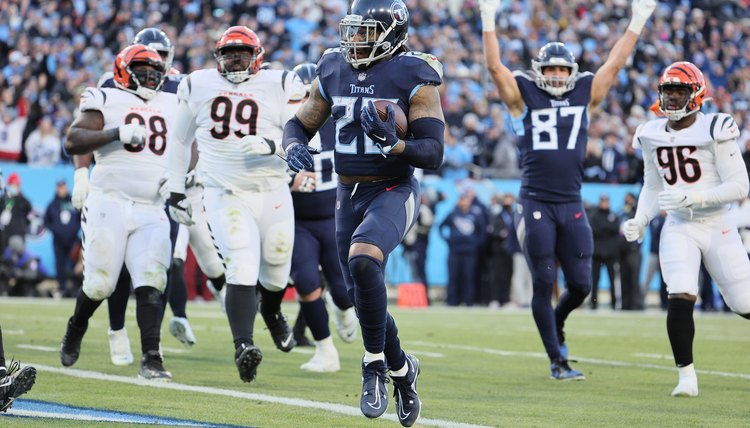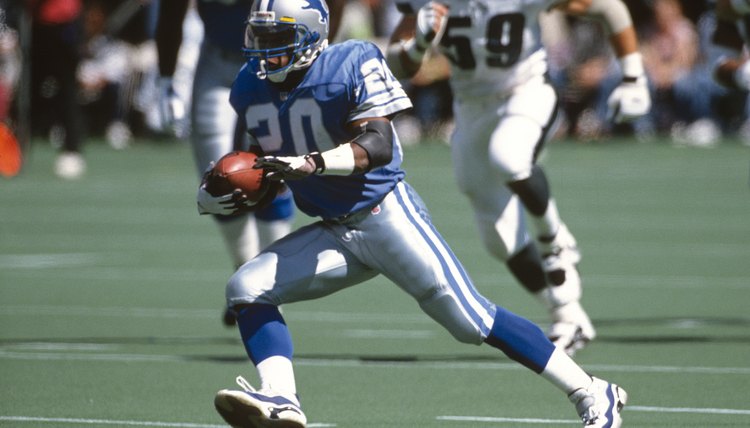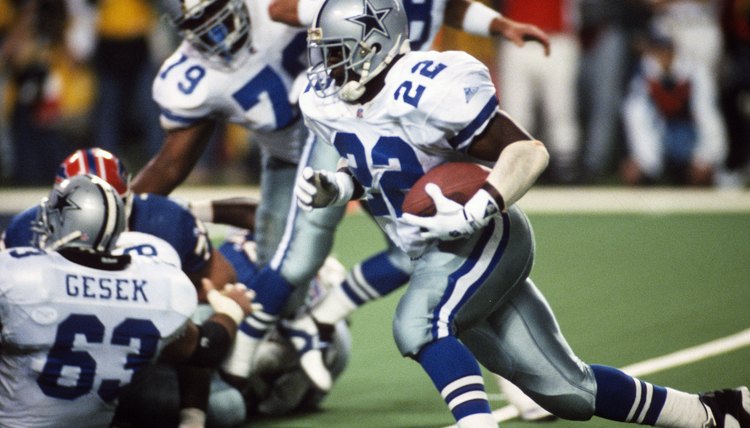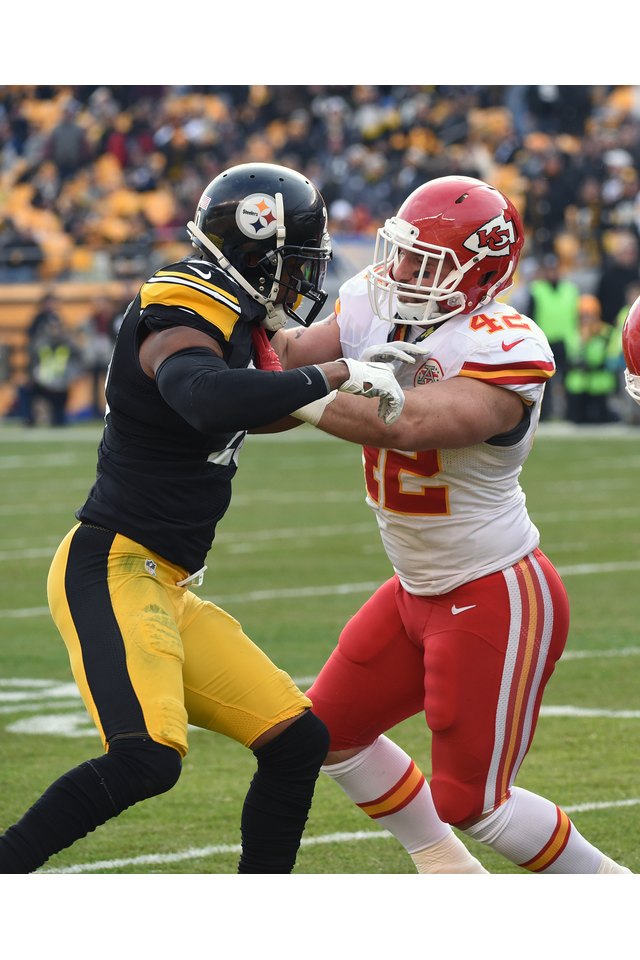Types of Football Running Backs (with Video)

While the position of running back seems very simple, the average NFL fan might be shocked to know that there are many types of running backs. The types of running backs are based on what the back does best, some running backs have exceptional speed, others strength, and a rare few can do it all. Many NFL teams build their backfields around having a mix of these styles. Some coaches might favor one style over the other and choose running backs that fit that style or he might want a roster with backs to cover various situations. These are the most popular styles of running backs in the NFL.
What are the running back positions?
There are three different football positions in American football. These are the halfback, tailback, and fullback. The tailback stands behind the QB and another back which forms the “I’ in I formation. They sometimes get the handoff or act as a receiving option. The fullback will often stand in front of another back and block for them or sometimes get the handoff. The halfback is usually the primary ball carrier and stands in the general vicinity of the quarterback. Often, running backs go between these positions with ease based on the play and formation.
What is a Power Back?
A power back is a back that uses his size and strength to run between the tackles and make crucial yards. A power back will see the majority of their running plays between the tackles on a handoff and is considered a "north-south" runner because he rarely runs pitch routes. Coaches don't usually expect power backs to have long runs, but they are valuable on third downs when a team needs 3 yards or less for a first down. They are also used during short yardage plays on the goal line to push through for a touchdown. A power back uses his strength to punish linebackers and push them backward.
The power back has fallen to the wayside in recent years with the passing game having more of an emphasis in modern NFL offenses. However, players like Derrick Henry and Nick Chubb continue to make a name for themselves punishing defensive linemen at the line of scrimmage. Another example of a power back is the one of the greatest and most powerful running backs in NFL history Jim Brown.
What is a Speed Back?

A speed back is a back that can run the ball with top tier quickness. Speed backs are often some of the fastest players on the field and can change the scope of a football game. If a speed back can get one or two effective blocks before getting to the perimeter of the defense, he can use his speed to run by potential tacklers and get into the end zone. Most coaches utilize these players by running pitches and screens to separate themselves from a blitz. However it is near impossible for them to overpower the massive defensive ends which can lead to fumbles. Hall of Famers Barry Sanders and Gale Sayers are examples of two of the most effective speed backs in football history. In modern days, guys like Raheem Mostert and Breece Hall are bringing game breaking speed to the running game
What is an All-Purpose Back?

An all-purpose back can run between the tackles, run to the outside, block, pass and catch the football. Some all-purpose backs can touch the ball on 60 percent to 70 percent of the offensive snaps in a game. All-purpose backs are extremely valuable rushers to an offensive backfield because they are versatile and can help their team in so many ways. It all starts with running the football, but they can be just as valuable in any of the other areas. Bears Hall of Famer Walter Payton was an all-purpose back who many consider to be the best ever at his position. Cowboys running back and Super Bowl champion Emmitt Smith is another Hall of Famer who excelled in all these categories. Modern day examples include Christian McCaffery, Alvin Kamara, and more.
What is a Blocking Back?

Blocking backs are the tight ends of the running back position. They help open holes for the ball carrier and act as extra linemen on the offensive line. They also help protect the quarterback as blockers when he drops back to pass. Blocking backs are among the biggest and toughest backs in the sport as they must both run the ball and act as offensive linemen. They carry the ball on occasion but their main job is to protect their offense from defensive players, so carries are limited. Some of the top rush and pass blocking backs include fullbacks like Jim Taylor, Tom Rathman, Bronko Nagurski and John Henry Johnson.
What is a Receiving Back?

Receiving backs are the wide receivers of the running back positions. They mainly come out on passing plays and can even line up in the slot or out wide in some offensive formations. They mainly exist to catch passes and evade cornerbacks as they try to make big plays. Some of these backs can even rack up more receptions than rushes. They are becoming popular in college football with the popularization of the Air Raid offense, and many professional football teams even utilize them. Guys like Austin Ekeler, Alvin Kamara and D’Andre Swift have put up big numbers while not necessarily being the best at running the ball.
Writer Bio
Blaise is a Freshman at the University of Missouri, studying Journalism at the world-renowned J school. He is the host of the Fast Five Podcast with his Childhood friend Sam Sinclair and interns with the Sports AI platform Pine Sports. He is a huge fan of the Kansas City Chiefs and the St Louis. Cardinals and hopes to cover them professionally in his near future.
